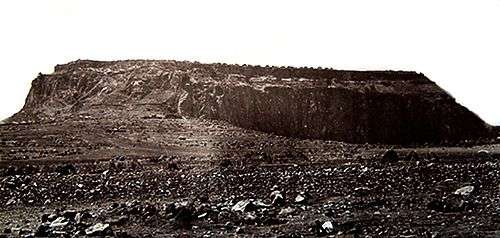Amba (landform)

An Amba (Amharic: አምባ āmbā, Tigrinya: እምባ imbā) is a characteristic landform in Ethiopia. It is a steep-sided, flat-topped mountain, often the site of villages, wells, and their surrounding farmland. These settlements were located there because they were very defensible and often virtually inaccessible plateaus.
The original term in Amharic indicates a mountain fortress. Amba Geshen, for example, is a historically significant amba where members of royal families were kept under guard for their safety and to prevent their participation in plots against the sitting emperor. Other noted Ambas include Amba Aradam and Amba Alagi, sites of famous battles during the first and second Italo-Ethiopian Wars. In Tigrinya, the term is "Emba" (also spelled "Imba").
In 2008, a scientific mission identified on an amba near Harar, the Kundudo, one of just two feral horse populations in Africa.
See also
Sources
- Munro-Hay, Stuart, Ethiopia, the Unknown Land: A Cultural and Historical Guide, Contributor Pamala Taor, Published 2002 by I. B. Tauris, 384 pages, ISBN 1-86064-744-8